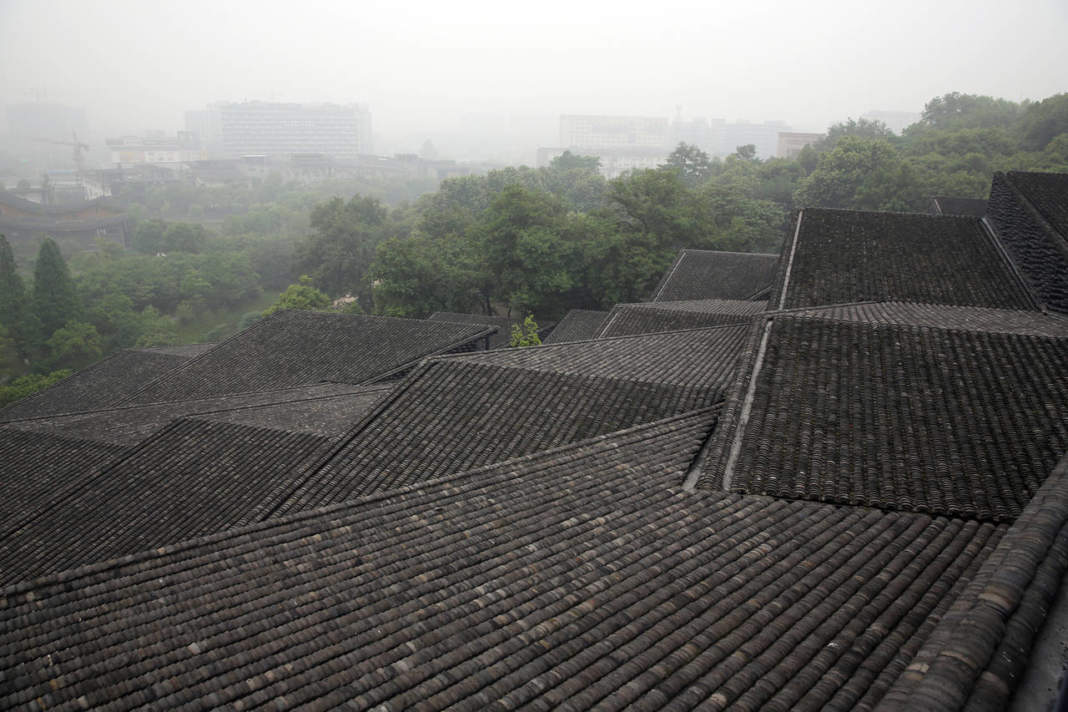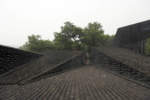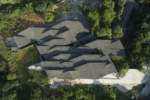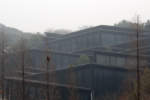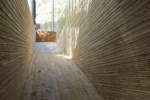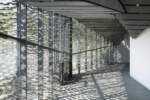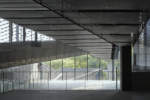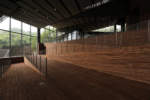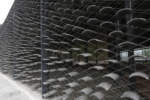architect: Kengo Kuma & Associates
location: Hangzhou, China
year: 2015
The folk art museum is located within the campus of the China Academy of Art in Hangzhou, on a steep ground, previously used as a tea field. The museum is formed by a serie of units that creates a complex geometric pattern which follows the topography. The main objective of the architects was to preserve the ground layering and make it perceptible from the building floors. Through the use of individual parallelogram shaped units, the building appears as a complex organic system that comply with the ground. Each unit has a small individual roof, so the outlook becomes like a village that evokes a view of extending tiled roofs. The outer walls are covered with a screen of tiles hung up by stainless wires, functional to control the amount of sunlight coming into the internal spaces. The old tiles, used for the screen and the roof, comes from local homes and their size are all different, helping the architecture to naturally blend into the ground.
Client: China Academy of Arts
Program: museum, conference hall
Design: Kengo Kuma & Associates
Structural Design: Konishi Structural Engineers
Facility Design: P.T. Morimura & Associates
Site area: 11,279 sqm
Total floor area: 4,970 sqm
Stories: one-story, partially two stories
Design period: April 2009 to April 2011
Construction period: January2013 to September 2015
Structure: concrete encased steel beam/column


